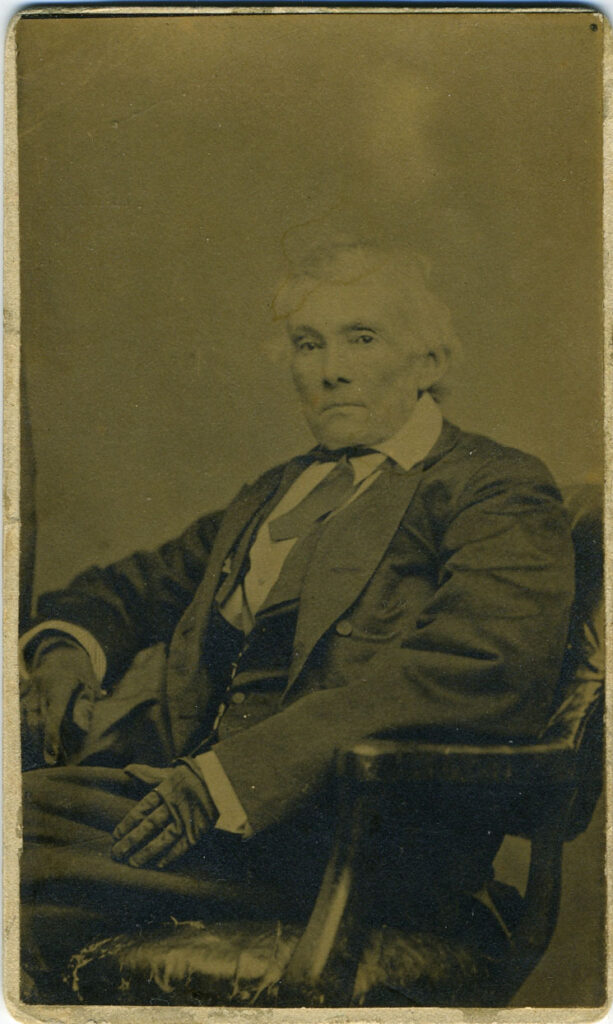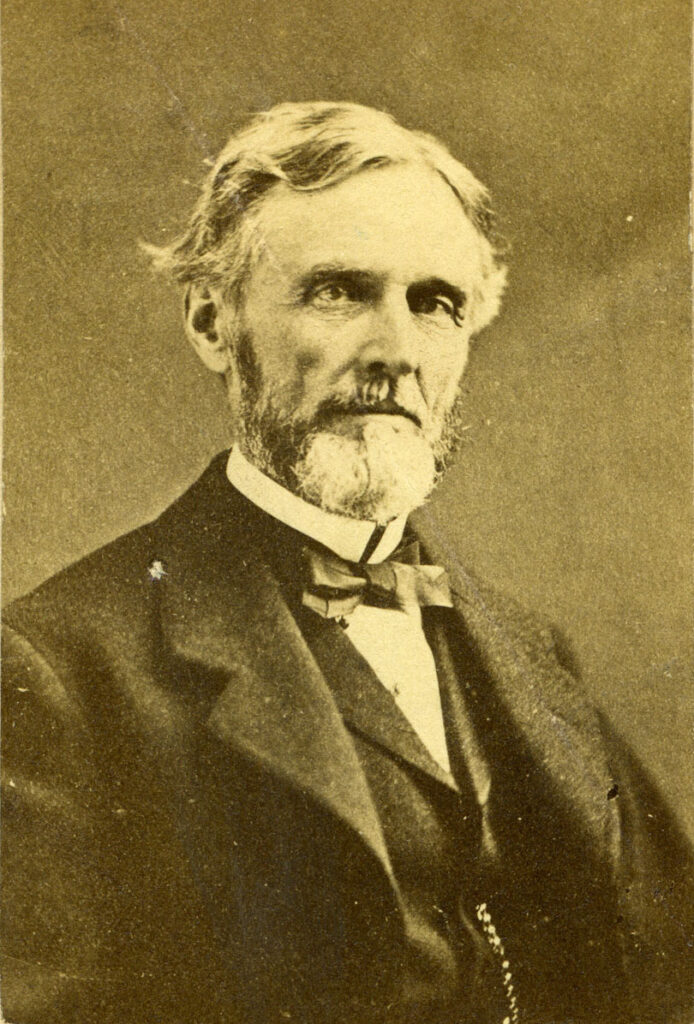Section #22 - The Southern States secede and the attack on Ft. Sumter signals the start of the Civil War
Chapter 275 : The Confederate States Of America Are Organized In Montgomery
Date: February 3, 1861
Virginia Opens Its State Convention To Discuss Secession

Virginia opens a convention to discuss secession in Richmond, two day after Texas exits.
The state’s history cries out for it to remain loyal, given its role in founding the Union, fighting for it under George Washington, and then begetting four of its first five presidents.
“Staying in” is the majority feeling among the delegates on February 3, 1861. It is also the preference of Governor John Letcher, who replaces the fiery abolitionist, Henry Wise, on January 1, 1860, and of John Janney, president of the convention and a founder of the Constitutional Union Party.
Still Wise has his pro-secession supporters, perhaps a third of those present, who are convinced that the Black Republicans intend to abolish slavery altogether once Lincoln takes power.
What complicates matters, however, is that those who are viscerally pro-Union, are divided as to the level of their commitment.
Some, like Congressman John Carlile, are unequivocal in condemning secession.
It is the result sir, of mature deliberation, concocted in treason, for the express purpose of breaking up constitutional liberty in this country… The plot was one that was conceived in perjury at Washington, and carried out by falsehood throughout the country, attended by coercion, intimidation, insult and a reign of terror, which was equally concerted throughout Virginia, as well as in the other Southern States.
(Carlile will ultimately lead a break-away movement in June 1861 that becomes the pro-Union state of West Virginia.)
Other Virginians, the “Conditional Unionists,” adopt more of a “wait and see” attitude — their key litmus test being whether or not Lincoln withholds the use of force in South Carolina.
Date: February 4-9, 1861
The Confederate States Of America Are Founded At Montgomery

Nowhere is the sense of urgency about what to do next greater than among the seven states that have left the Union as of February 1, 1861.
It is the 60 year old fire-eater from South Carolina, Robert B. Rhett, who anticipates the need for a Southern Convention, and he diligently organizes one to begin on February 4 in Montgomery, Alabama.
On that day 37 delegates from the seceded states begin to pour in to the Senate Chamber of the Alabama legislature. They see their task much like that of the founding fathers: first to assert their independence; second to write a Constitution and form up a new government enabling them to act in lockstep.
Those gathered consider themselves conservative by nature, disinclined to embrace the hot-heated stances prevalent in South Carolina. They choose Howell Cobb, who resigned as Buchanan’s Treasury Secretary back on December 8, as president of the convention. They then look to another Georgian, the 5’ tall, 95 lb. dynamo and friend of Lincoln, Alexander Stephens, to orchestrate the proceedings. Strident men like Rhett and Lawrence Keitt are present, but they are held in check by others, including Jefferson Davis who tracks events from his home in Mississippi.
All meetings are held in secret, and action follows swiftly. By the fourth day, February 7, the delegates pass a Constitution, largely the work of the German born Christopher Gustavus Memminger, who will go on to serve as Treasury Secretary in the new government he helps codify. The work itself mirrors the 1787 US document, on the grounds that it served the nation well until the Black Republicans decided to violate it.
Still there are a few alterations, chief among them an explicit guarantee of slavery in Article I, Section IX:
No…law denying or impairing the right of property in negro slaves shall be passed.
Other articles try to harness federal power: the President is limited to one six year term, and the loosely defined duty to act on behalf of “the general welfare” of the nation is omitted. Time will tell that these limits on central authority will often plague efforts to get members to act in unison.
On February 9, a name is chosen for the new government – the Confederate States of America.
Date: February 11-18, 1860
Jefferson Davis Is Chosen As The CSA President
The next order of business lies in selecting the CSA’s top officers, each for one six year term.
Initial interest here focuses on two influential Georgian moderates – 49 year old Senator Robert Toombs and 44 year old Howell Cobb, who recently resigned from Buchanan’s cabinet. But Toombs is sometimes prone to drunkenness and Cobb’s often abrasive temperament rules him out.
The answer instead is Jefferson Davis of Mississippi, who insists that he would prefer a position as head of the CSA army.
Davis too arrives with his own full share of critics. Sam Houston calls him “as ambitious as Lucifer and as cold as a lizard.” Howell Cobb’s brother, Thomas, says: “he is not great in any sense of the term…the power of will has made him all he is.”
But Davis is blessed with the military background and “command presence” that the delegates feel may well be needed if Lincoln challenges the new government with force.
In the end, he becomes the only nominee put forward, and wins by acclamation. His response is characteristically dour, a tone that will be repeated throughout his tenure:
Upon my weary heart was showered smiles, plaudits, and flowers, but beyond them I saw troubles and thorns innumerable.
The Vice-Presidential slot goes to a third prominent Georgian, Alexander Stephens. He will find Davis overbearing and will quarrel with him almost continuously over the next four years.
Stephens is sworn in on February 11, with Davis’ formal inauguration delayed until February 18, when he finally reaches Montgomery from Mississippi.
In his acceptance speech, Davis calls upon other Southern states to join the cause; insists that the break is permanent; hopes that war with the North can be avoided while mentioning it five times; and seeks recognition from the UK and France to insure a continuing flow of cotton across the Atlantic.
With this, America’s struggle no longer becomes a matter of South Carolina and Sumter, but of how to react to a formal new power, the CSA, residing on domestic soil.
Sidebar: Initial CSA Cabinet
Within a month of his election, Davis will organize his initial cabinet, choosing one member from each of the six states beyond Mississippi that have seceded. Harmony seldom reigns for long within this circle, given Davis’ stern and autocratic manner. Both his State and War Secretaries will be gone in less than seven months, and his Vice-President, Stephens, will become a constant critic over the life of the confederacy.
Jefferson Davis’ Opening Cabinet
| Position (Total *) | Name | Home State | Age |
| Vice-President (1) | Alexander Stephens | Georgia | 49 |
| Secretary of State (4) | Robert Toombs | Georgia | 49 |
| Secretary of Treasury (3) | Christopher Memminger | South Carolina | 58 |
| Secretary of War (5) | Leroy Pope Walker | Alabama | 44 |
| Attorney General (4) | Judah P. Benjamin | Louisiana | 49 |
| Secretary of Navy (1) | Stephen Mallory | Florida | 49 |
| Postmaster General (1) | John Reagan | Texas | 42 |